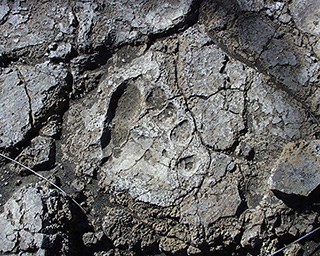

The Kaʻū Desert is a harsh landscape where volcanic eruptions and ashfall from events in Halemaʻumau crater have created a desolate, moon-like environment.
The trail is extremely uneven in many places between Maunaiki and the trailhead on Hilina Pali Road. It involves hiking through fields of broken, jagged lava. The trail is marked with ahu (stacked rocks) and requires close attention. There is no water and for most of the trail there is no opportunity for shade.
See photos from the 1919-1920 eruption of Maunaiki
|
Last updated: September 10, 2020
